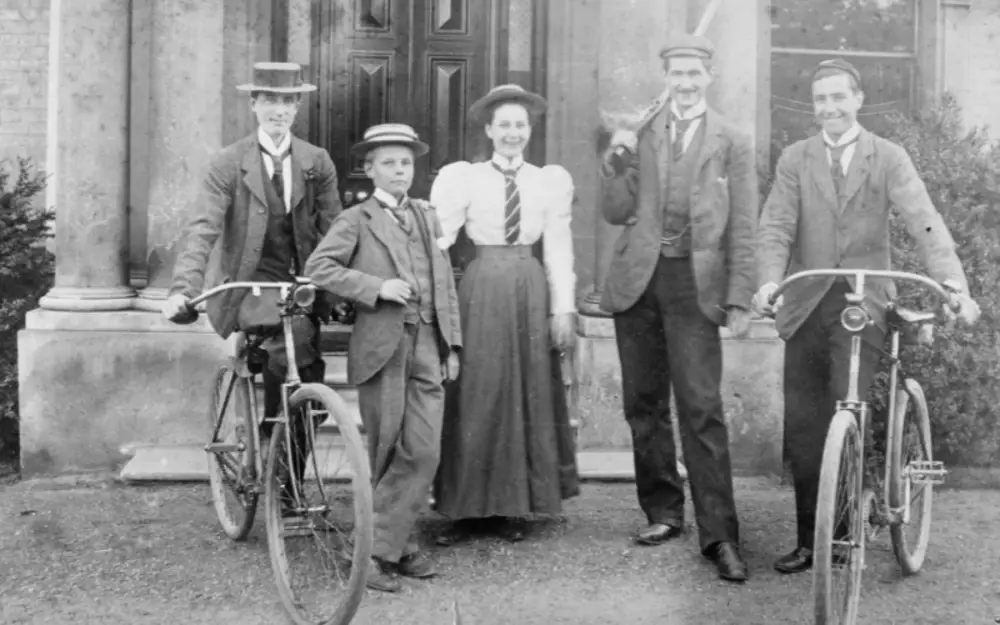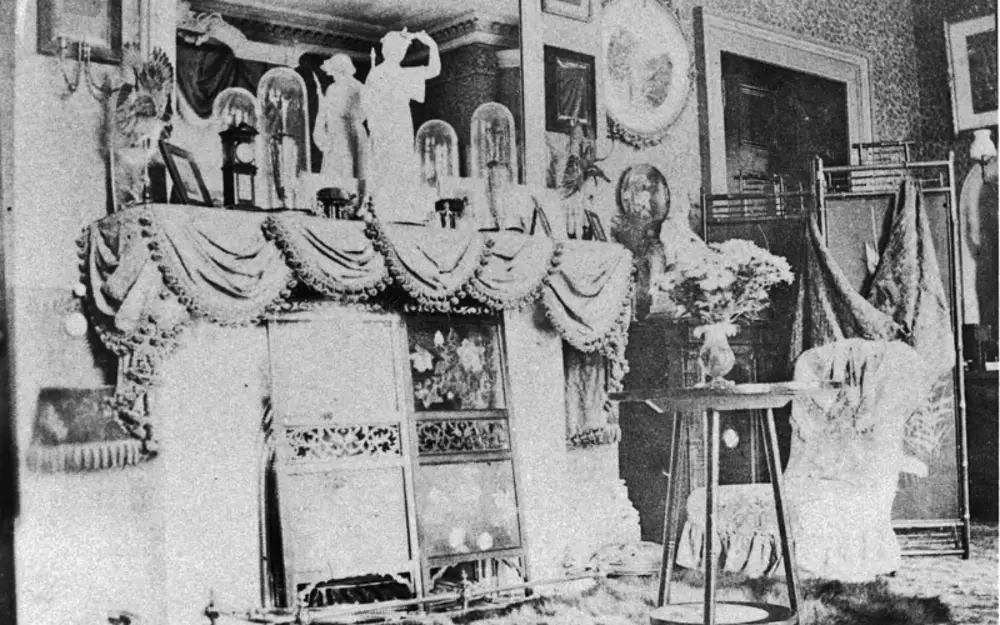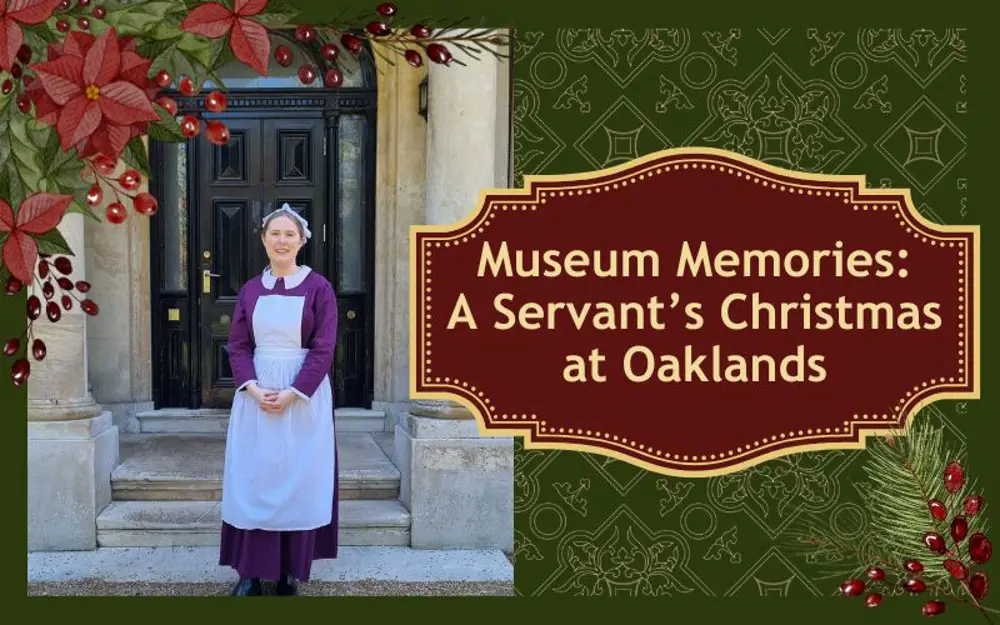Museum Memories Blog: Christmas at Oaklands
By Rachel Webber, Visitor Host
Christmas trees, cards, crackers, carolling, presents, and Boxing Day. These are some of the Christmas traditions that the Victorians introduced to the UK. Heavily influenced by northern European traditions, social change and the church, our colourful Christmas celebrations of today look quite similar to the Victorians’ celebrations of the 19th century.
The Wells family Christmas
Let's take a trip back in time to Oaklands House – Christmas 1881 to be exact. Fred Wells and his second wife Jane were the proud owners of Oaklands, which they lived in with their six children and five servants. Christmas would have been an important holiday for the family. Fred Wells was a deeply religious man, who worshipped and worked at London Road Congregational Church. As Superintendent of the church, he would have been extremely busy over the festive period, tending to church services and organising poor relief. Of course, Christmas is the celebration of the birth of Jesus Christ and the start of the winter solstice. Before the Victorians, the spirit of Christmas was symbolised as a merry old man who presided over festive parties with drinking, feasting and merriment – not very family friendly! This changed drastically with the publication of Charles Dickens novel A Christmas Carol in 1843.

Helping the poor at Christmas
The publication led to a monumental shift in the way people viewed the poor in Victorian England. You could say Christmas as we know it today was ‘invented’ to awaken a social conscience among the well-to-do classes. The industrial revolution had seen huge social change, with millions of people flocking from rural areas to industrial cities to work in the factories. Working people lived in cramped, squalid living conditions. December also saw the challenges of short, dark days and freezing weather. Festive cheer was far from many Victorians’ minds. This spurred a new movement of Christmas to be a time for goodwill and generosity – to make life more bearable for the working classes. This is the eventual outcome of a Christmas Carol with Ebeneezer Scrooge shown the true meaning of Christmas in the form of three ghosts who visit him on Christmas Eve. Fred and Jane Wells and their older children may have partaken in charitable acts at this time. Many of the leisured class would have knitted stockings or gloves, handed out baskets of food including oranges, tobacco, sweets, coal and money to the poor; or would have held lunches or balls to donate money to poor relief and workhouses.
Christmas cards
Fred Wells was a prominent businessman and philanthropist in Chelmsford. He would have had many acquaintances to send Christmas wishes and pleasantries to, which would have taken up a lot of his time. Luckily for Fred a civil servant called Sir Henry Cole had invented Christmas cards in 1843. To promote the newly formed penny post he commissioned an artist friend to create a merry festive scene of celebrating and drinking. The industrial revolution saw printing technologies flourish and enabled Henry Cole to print one thousand cards to sell in Regent Street – they sold out immediately! In 1870 the half penny post was introduced making card sending much more affordable to the middle classes. By 1880 over eleven million Christmas cards were sent across the UK in a population of twenty-nine million. Alas we see a new Christmas institution begin!
Public holidays
The idea of Christmas being a family orientated holiday was popularised by the Victorians. It was to promote the ideal of order and morality in not only the home but in society. The advent of Christmas and Boxing Day as a bank holiday in 1871 helped enormously in allowing families to celebrate together. Even the railways offered discounted tickets to encourage the public to get together. The defining figureheads of this movement were the royal family. When the London Illustrated News (think OK or HELLO! Magazine) published a drawing of Queen Victoria, Prince Albert and their children gathered around their Christmas tree in 1848 in Windsor Castle, families up and down the country were eager to emulate the royal lifestyle.

Christmas trees
We have Queen Charlotte to thank for introducing Christmas trees to Great Britain in 1800. Queen Charlotte was a member of the royal house of Hannover in Germany, and so we begin to see the Germanic influence of Christmas in the UK. Queen Victoria remembered decorating the Christmas tree with her grandmother, Queen Charlotte, as a little girl, and she continued this tradition with her German husband, Prince Albert, and their nine children. The popularity of the Christmas tree in the UK particularly developed during the Victorian period because of the influence of the royal family. That famous London Illustrated News depiction of the royal family gathered around the Christmas tree would have encouraged other families to take up the same tradition.
We know Fred Wells was an admirer of Queen Victoria as he requested that Oaklands was built in the style of Osbourne House. The Wells family would have decorated their tree in the drawing room with the help of the gardeners who brought foliage and greenery from the garden to decorate. In 1881 Fred and Jane had six children with Frederick 29, Ada 28, William 22, Constance 19, Selkirk 2 and Dorothy aged 1. You can imagine the excitement and joy of the children decorating the tree. They would have tinsel, ribbon, gingerbread men, dried fruit, proudly displaying their own hand made decorations. By the later 1800s decorations had become mass produced made from tin or fabric overtaking the more traditional, wooden decorations that were imported from Germany.
Christmas presents
With the family together, Christmas cards written and sent off, and the Christmas tree decorated it was time for the Wells family to enjoy the festivities. Fred and his family would have exchanged gifts on Christmas Eve which was the tradition in Victorian times. As they were a wealthy family the children would have received gifts including dolls, clockwork toys and books. For the older children they may have been gifted badminton and cricket sets, gardening tools and musical instruments. Once the presents were opened in the drawing room, they made the ten-minute walk down to London Road Congregational Church to attend Midnight Mass. Christmas Day would have been another busy day for the family with the Christmas Church service in the morning. This would be followed by Christmas dinner and games in the evening.

A Servants’ Christmas at Oaklands
However, what was Christmas like for the five servants who worked at Oaklands? How did they celebrate? What jobs did they have to do? To find out and learn much more, with objects from our archive, please join me as I transform into the Wells family cook Ann Vale, to bring to life A Servants’ Christmas at Oaklands this December.

